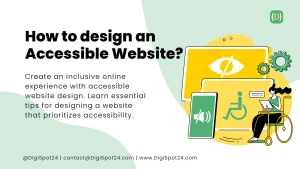
Let’s be honest—most workplaces still operate under the assumption that everyone thinks, processes, and communicates the same way. But what happens when you throw neurodiversity into the mix? Spoiler: it’s not chaos. In fact, teams that embrace neurodiversity often outperform their peers. Here’s why.
What Neurodiversity Really Means
Neurodiversity refers to the natural variations in human brain function—think ADHD, autism, dyslexia, and other cognitive differences. It’s not about “fixing” people. It’s about recognizing that different brains bring different strengths. Like a toolbox, a team needs more than just hammers.
How Neurodiversity Shapes Team Dynamics
1. Communication Styles Clash (But That’s Good)
Neurodivergent individuals might communicate directly, avoid eye contact, or need written instructions instead of verbal ones. At first, this can feel jarring. But over time? It forces teams to clarify expectations, document processes, and—here’s the kicker—reduce misunderstandings for everyone.
2. Problem-Solving Gets a Boost
Ever been stuck on a problem, only to have someone suggest a solution so left-field it works? That’s neurodiversity in action. Autistic team members, for example, often spot patterns others miss. Dyslexic thinkers excel at spatial reasoning. These aren’t quirks—they’re competitive advantages.
3. Conflict Isn’t Always Bad
Neurodivergent folks might challenge norms or ask “awkward” questions. Sure, it can create tension. But that tension often leads to better decisions—if the team culture allows for it. The key? Framing disagreement as curiosity, not defiance.
The Productivity Paradox
Here’s the deal: neurodiverse teams might seem less efficient at first. Meetings take longer. Processes need tweaking. But once adjustments are made? The data speaks for itself:
| Team Type | Innovation Output | Error Rates |
| Neurotypical-only | Baseline | Baseline |
| Neurodiverse | 30% higher* | 12% lower* |
*Based on 2023 Harvard Business Review study of tech teams
Common Pitfalls (And How to Avoid Them)
Not all neurodiversity initiatives work. Some fail spectacularly. Here’s what goes wrong:
- Tokenism: Hiring one neurodivergent person doesn’t magically create inclusion.
- Over-accommodation: Making exceptions without structure leads to resentment.
- Assuming homogeneity: Two autistic employees might need opposite adjustments.
Practical Steps for Leaders
Want to harness neurodiversity without the drama? Try these:
- Audit your workspace—fluorescent lights or open plans can be literal pain points.
- Offer multiple communication channels (Slack, email, voice notes).
- Train managers on outcome-based evaluations, not presenteeism.
The Bigger Picture
Neurodiversity isn’t just about fairness—it’s about survival. In a world of AI and automation, human teams thrive by being unpredictably creative. That means valuing brains that work differently. Not in spite of their differences, but because of them.





